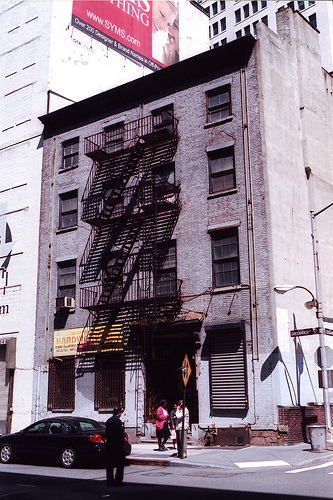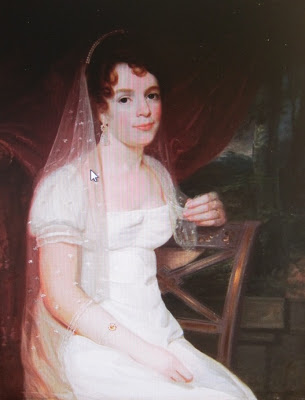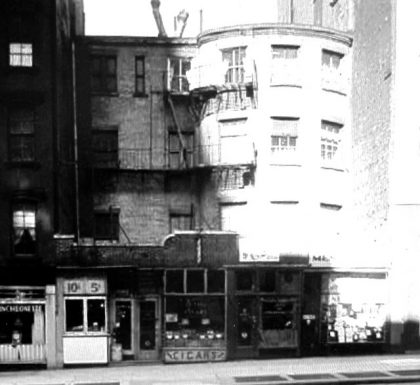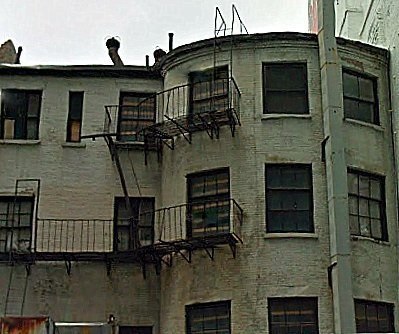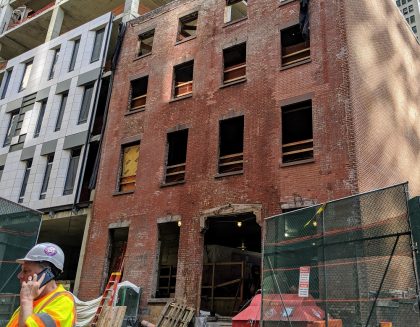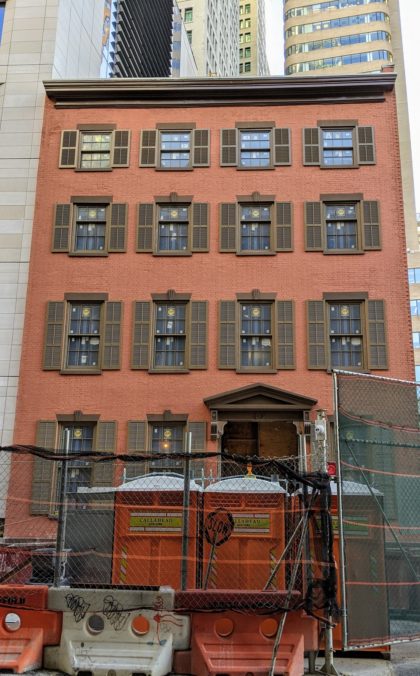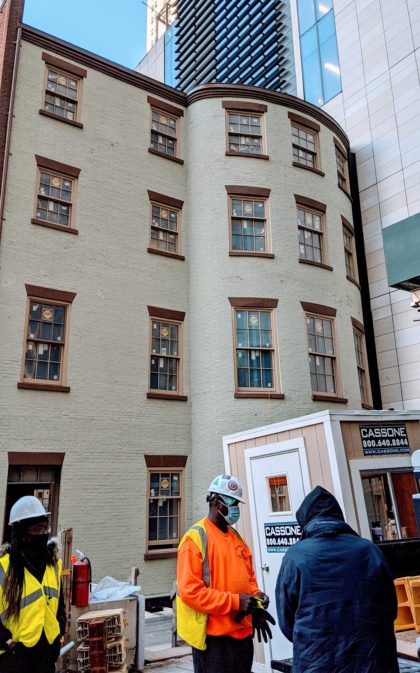The History of 67 Greenwich – The Robert Dickey Mansion
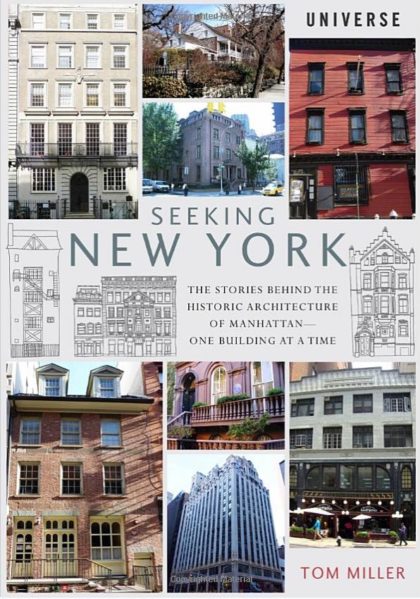 Tom Miller, who writes about the history of Manhattan buildings at Daytonian in Manhattan, has allowed Tribeca Citizen to create a database of his Tribeca posts. If you enjoy these, and you will, then you should definitely check out his website, which also has write-ups about buildings all over the island. And don’t miss his book, Seeking New York: The Stories Behind the Historic Architecture of Manhattan—One Building at a Time.
Tom Miller, who writes about the history of Manhattan buildings at Daytonian in Manhattan, has allowed Tribeca Citizen to create a database of his Tribeca posts. If you enjoy these, and you will, then you should definitely check out his website, which also has write-ups about buildings all over the island. And don’t miss his book, Seeking New York: The Stories Behind the Historic Architecture of Manhattan—One Building at a Time.
··································
For the pedestrian passing the corner of Greenwich Street and Edgar Street in 2010, it was difficult if not impossible to imagine that the old gray-painted brick building with roll-down security gates and metal signs was once among the proudest Federal mansions in Manhattan.
With the Revolutionary War over and the British occupation ended, the Common Council in 1787 ordered that the shoreline be extended with landfill 65 feet into the Hudson River. Seven years later the council passed an ordinance to create Greenwich Street, stretching from the Battery to Rector Street. The new street, completed by 1797, gently followed the shoreline and the views it offered along with the cooling river breezes in summer attracted wealthy homeowners.
Before long graceful brick mansions lined the street, creating one of the most fashionable residential areas in the city. Wealthy merchant Robert Dickey spent $11,017 on three lots in 1809 and by November construction was underway on two houses at Nos. 69 and 71. Dickey dealt in imported goods including tea, spices, coffee rice and “Japan wood.”
A grassy yard separated the homes from their outbuildings that faced Lumber Street to the rear—two stables, a coach house and a storehouse. In 1810 the Dickeys were living in the larger home, No. 71, while construction was still being completed and Dickey ran his trade from a little building in the rear at No. 8 Lumber Street.
Dickey and his wife, the former Anne Brown, lived here until 1820. The successful importer was one of the richest men in New York with an estate of approximately $20,000 in 1815. As did most of Manhattan’s wealthy citizens, they owned a sprawling country estate far north of the city—a 43-acre property overlooking the Hudson near the Jumel manor.
Financial problems befell Dickey when a ship was lost in a storm at sea in 1819. Insurance company lawsuits and outstanding loans and mortgages forced him to sell his Greenwich Street properties.
In March of 1822 the Common Council renumbered the addresses and the Dickey mansion became No. 67. Two years later Peter Schermerhorn took title of the house. With his brother, Abraham, he was a partner in Schermerhorn, Banker & Co. and Schermerhorn, Willis & Co., as well as a director of the Bank of New York.
At the time Schermerhorn took possession of the house, William Bayard Jr. had been living in it since 1821. Highly prominent, Bayard was a successful merchant with LeRoy, Bayard & Co., a director of the Bank of America, president of the Chamber of Commerce, president of the Savings Bank and a partner in the Tontine Coffee House.
With the knowledge the Bayard would be leaving in 1824, Schermerhorn advertised the house in the New York Evening Post in 1823: FOR SALE, OR TO LET, The house at No. 67 Greenwich street, with the stable and coach house on Lumber street, in the rear, as now occupied by William Bayard, Jun. Esq. The house is about 40 feet front on Greenwich street and has every requisite for an elegant and convenient establishment. ALSO—The large fireproof Store in the rear of the above, on Lumber street, having double spacious cellars, and is well calculated for a wine or importing merchant.
The ad worked. Equally prominent banker and merchant Nicholas Low moved in, staying from 1824 to 1826.
When dry goods merchant John C. Henderson leased the house beginning in 1827 he and his wife took boarders, including the imminent philanthropist and politician Theodore Lyman, Jr. On February 25, 1827 Lyman wrote to Henry Clay, a portion of which read: “Whenever you happen to have a moment of leizure [sic], may I beg you to do me the favor to address a letter to me to the care of Mrs. Henderson No. 67 Greenwich Street, New York. Have the goodness, also, to accept my most sincere and particular acknowledgments for your very obliging and valuable attentions to me at Washington, which I shall, ever, remember with the greatest satisfaction.”
At the time lower Manhattan was changing as businesses overtook residential areas. In 1828 James Fenimore Cooper noted with some melancholy “commerce is gradually taking possession of the whole of the lower extremity of the island, though the Bay, the battery, and the charming Broadway, still cause many of the affluent to depart with reluctance.” Yet No. 67 continued to attract well-to-do boarders, including merchants Henry Butler, Minot C. Morgan, Daniel C. Eaton, Edward Bill.
The Schermerhorn family retained possession of the property as “Mrs. Ludlow” ran her boarding house here in 1837. That year New-York As It Is described it as a “Principal Private Boarding House for the accommodation of transient boarders.” Elisha Foot took over operation of the boarding house from 1842 through 1844. But by now the neighborhood was noticeably changing.
In 1851 there were fifteen boarders living in No. 67. All were working class men like James Dooley who, on December 22, 1852, was drinking at a porterhouse down the street at No. 18 Greenwich Street. Dooley got into what The New York Times described as “a wrangling dispute…about some trifling matter” with Henry L. Petesch. After “hard words passed,” Petesch drew a pistol from his pocket and shot Dooley. In particularly eloquent Victorian prose the newspaper described the attack. “A portion of the contents of the weapon took effect in the left breast of Dooley, and seriously injured him.”
Petesch was arrested, charged with attempted murder. It was the sort of affair that never happened to residents of No. 67 during Robert Dickey’s time.
The house served as well as a polling place for the Second Election District of the First Ward in 1854 and as the office of the American Industrial Association. The purpose of the Association was “to provide for an obtain employment for farmers and laborers” and it would be here for at least a decade.
In July 1856, the British ship the Orient docked in New York, carrying the first of 3,800 English laborers from the Crimea. The men had been employed as excavators, or “navies,” for two or three years. Now referred to as the “Army work corps,” they crowded into the office of the American Industrial Association seeking work. The Secretary of the Association promised that “no difficulty will be found in giving profitable employment to all who may seek our shores with the intention of becoming industrious and peaceful citizens.”
Frederick L. Seeley ran his business from No. 67 at the same time, a “licensed keeper of intelligence offices.”
Three years later, in 1860, things continued to go downhill for the once-proud mansion which was still owned by the Schermerhorn family. Herman H. Stollmeyer ran an “emigrant boarding house” and when German immigrant John Rutman arrived from Bremen on July 16, Stollmeyer hatched a scheme.
He managed to get the new arrival drunk on his first night in the boarding house, then convinced him to take an interest in the business. Rutman agreed and gave Stollmeyer $100 in cash and a note for $50 payable in sixty days. The following evening Mrs. Stollmeyer, an attractive young woman, requested the German to escort her on a stroll.
Herman Stollmeyer then “discovered” the two, flew into a rage and “thrust him from the house,” according to The Times, canceling the business deal. The immigrant was not so naïve, however, and before long Stollmeyer was arrested for conspiracy to defraud.
Stollmeyer’s problems did not end there. The same year the Sanitary Police, saying that the property “required cleansing,” gave him three days to clean up the premises. Otherwise it would be cleaned at public expense, “the cost to be a lien on the property until paid.”
In 1869 Trinity Place (Lumber Street had been renamed in 1843) was widened and the house lost the outbuildings and most of the rear yard. In the meantime, the Greenwich Street Elevated railroad had been built in 1868. Before long a second elevated train would be running behind the house as well. The neighborhood declined even more.
The New York Times noted on April 9, 1871 that “For several years past the lower half of the City has been infested with basement houses of prostitution of the lowest character.” Among these was No. 67 Greenwich Street. On April 8 detectives and police simultaneously raided 29 disorderly houses. “From these places thirty men and ninety-two women and girls, of the most degraded and homely description, were taken into custody, but the male proprietors of the places, by some strange mischance, were nearly all absent at the time of the raid, and so escape arrest.”
Although he slipped through the fingers of police, a warrant was issued for Charles Iker, the proprietor of the vile den at No. 67.
A year later Edmond H. Schermerhorn commissioned architect Detlef Lienau to remodel the house. He removed the pitched roof which most likely had dormers; raising the fourth floor to a full story. The original splayed lintels on the second and third floors were replaced with plain stone lintels and he added a modern pedimented hood above the entrance door. The renovations cost Schermerhorn $10,000.
As the century progressed, however, the make-up of the tenants improved. Mary A. Hendricks, an elementary school teachers was here in 1875 and Fitzhue Smith, a bail bondsman, lived here in 1895. The 1890 census listed fifty-seven residents in No. 67—all of them Irish.
In 1900 A. McRoberts obtained permission from the city “to maintain a wagon for the sale of milk, milk shakes, etc., in Printing House Square, at a point near the Franklin Statue…on the condition that no horse shall be attached to the wagon…and that the street shall be kept free from dirt and refuse from the same.”
Nineteen-year old Leslie Garcia was working as a clerk in the ground floor business here in 1902 when she got involved in an arson-burglary scheme. A 74-year old second-hand book dealer, Andrew M. Copeland, convinced a group of youngsters to set fire to Public School No. 67 during school hours. When the children and teachers all filed out of the building, the youths hurriedly gathered up books and small valuables, like one teacher’s gold watch and chain valued at $60. They were able to make off with $700 worth of Latin and Greek “grammars.”
Hugh Brosman, a laborer, brought more positive publicity to No. 67 Greenwich Street when he lived here on January 17, 1909. On that day a young manicurist, Albertine Dequer, was walking along the icy edge of the river in Battery Park. Suddenly she was in the frigid water.
Private F. H. Crane of the Signal Corps was on the second deck of the Bedlow’s Island steamer Herman Caswell speaking to the captain when he heard shouts. He plunged into the river but, according to The New York Tribune, “the woman became frightened and struggled with the soldier, and for a few minutes it looked as if both would sink.”
But Hugh Brosman had also dove into the river and managed to help Crane pull the girl to the seawall. Four firemen from the fireboat fleet dragged the three to the top of the wall.
For several years around this time builder Charles Parkinson ran his business from here. The esteemed contractor was responsible for major Manhattan structures including the Potter Building, the New York Stock Exchange and 41 Park Row.
After owning the house for nearly a century, the Schermerhorn family sold it as part of “the Carpenter estate” in October 1919 to Rose A. McGuigan. McGuigan’s family and partners would retain the property until 1960.
The old house was purchased by Irving Schacter and Eli Goldhagen, brothers-inlaw, in 1960 and remained in the family for decades. Throughout the 20th century the somewhat abused building has been home to everything from a luncheonette to a cigar shop, a messenger service to a barber shop.
Today the Robert Dickey house is all that remains of the once elegant and fashionable residential district of Greenwich Street. It is one of only seven houses built before 1810 south of Chambers Street and is the last remaining Federal house with a bowed façade.
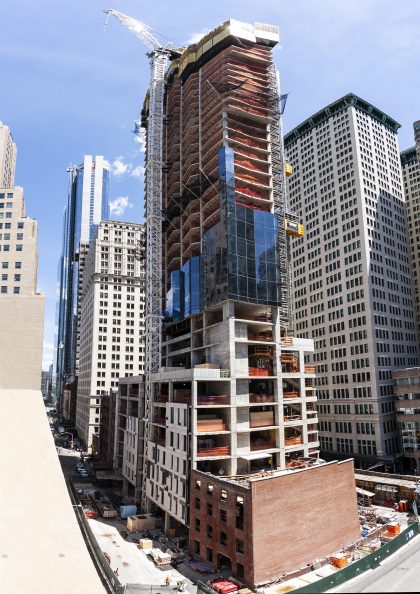
The AIA Guide to New York City called it “A shadow of once gracious architecture, it would be nicer stripped of its layers of gray paint.” The two-century old Dickey House is now being restored along with the construction of 77 Greenwich and will be part of a new public school at that location.







